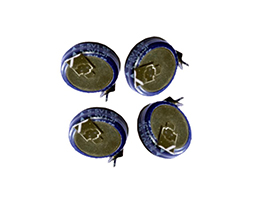Consulting phone:
135-3037-2041
(Mr.Wang)
Supercapacitor test method 1: Use a pointer multimeter to make sure that one test pen touches one foot of the capacitor, and then touches the other with another one. At this time, the needle will rise quickly and then slowly drop, which is the charging and discharging process of the capacitor. It means that the capacitor is good. If it is not changed, then if the above phenomenon occurs in the communication meter, it is also good. If there is no charge and discharge or the meter does not drop after rising, the capacitor is broken. If it does not drop, it will break down inside. If the needle does not move at all, it will fail. Large capacitors use 1X10 gears and small capacitors use 1X1K or 1X10K gears.

Supercapacitor test method 2: Use a digital multimeter to measure the capacitance: switch the gear to the capacitance (select the gear according to the capacitance value you measure), and use two test pens to overlap the two feet of the capacitor, and the meter has a certain value. Then go back to the Infinite Large position, swap the test leads and try again, this time the flash data size is slightly wrong, and then back to the Infinite Large, it means that the capacitor is good, if it can't return to the Infinite Large, it means there is leakage, if the flash is infinite, it means Internal open circuit or no capacity.